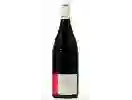
Winery Grafé LecocqCairanne
This wine generally goes well with beef, lamb or mature and hard cheese.
Food and wine pairings with Cairanne
Pairings that work perfectly with Cairanne
Original food and wine pairings with Cairanne
The Cairanne of Winery Grafé Lecocq matches generally quite well with dishes of beef, lamb or spicy food such as recipes of ramen burger, risotto of penne with chorizo and merguez or japanese curry.
Details and technical informations about Winery Grafé Lecocq's Cairanne.
Discover the grape variety: Mourvèdre
Mourvèdre noir is a grape variety originating from Spain. It produces a variety of grape specially used for wine making. It is rare to find this grape to eat on our tables. This variety of grape is characterized by medium to large bunches, and grapes of medium size. Mourvèdre noir can be found in several vineyards: South-West, Cognac, Bordeaux, Provence & Corsica, Rhône valley, Languedoc & Roussillon, Loire valley, Savoie & Bugey, Beaujolais.
Last vintages of this wine
The best vintages of Cairanne from Winery Grafé Lecocq are 2014
Informations about the Winery Grafé Lecocq
The Winery Grafé Lecocq is one of of the world's greatest estates. It offers 317 wines for sale in the of Cairanne to come and discover on site or to buy online.
The wine region of Cairanne
The wine region of Cairanne is located in the region of Rhône méridional of Rhone Valley of France. Wineries and vineyards like the Domaine Boutinot or the Domaine J. Boulard produce mainly wines red, white and pink. The most planted grape varieties in the region of Cairanne are Mourvèdre, Roussanne and Clairette, they are then used in wines in blends or as a single variety.
The wine region of Rhone Valley
The Rhone Valley is a key wine-producing region in Southeastern France. It follows the North-south course of the Rhône for nearly 240 km, from Lyon to the Rhône delta (Bouches-du-Rhône), near the Mediterranean coast. The Length of the valley means that Rhône wines are the product of a wide variety of soil types and mesoclimates. The viticultural areas of the region cover such a distance that there is a widely accepted division between its northern and southern parts.
The word of the wine: Cooperative cellar
A collective production structure to which winegrowers belong in order to pool their grapes, transform them into wine and ensure its marketing.














